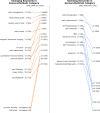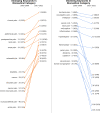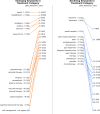Analysis of pain research literature through keyword Co-occurrence networks
- PMID: 37676880
- PMCID: PMC10484461
- DOI: 10.1371/journal.pdig.0000331
Analysis of pain research literature through keyword Co-occurrence networks
Abstract
Pain is a significant public health problem as the number of individuals with a history of pain globally keeps growing. In response, many synergistic research areas have been coming together to address pain-related issues. This work reviews and analyzes a vast body of pain-related literature using the keyword co-occurrence network (KCN) methodology. In this method, a set of KCNs is constructed by treating keywords as nodes and the co-occurrence of keywords as links between the nodes. Since keywords represent the knowledge components of research articles, analysis of KCNs will reveal the knowledge structure and research trends in the literature. This study extracted and analyzed keywords from 264,560 pain-related research articles indexed in IEEE, PubMed, Engineering Village, and Web of Science published between 2002 and 2021. We observed rapid growth in pain literature in the last two decades: the number of articles has grown nearly threefold, and the number of keywords has grown by a factor of 7. We identified emerging and declining research trends in sensors/methods, biomedical, and treatment tracks. We also extracted the most frequently co-occurring keyword pairs and clusters to help researchers recognize the synergies among different pain-related topics.
Copyright: © 2023 Ozek et al. This is an open access article distributed under the terms of the Creative Commons Attribution License, which permits unrestricted use, distribution, and reproduction in any medium, provided the original author and source are credited.
Conflict of interest statement
The authors have declared that no competing interests exist.
Figures











References
-
- Semwal A, Londhe ND, editors. S-PANET: A Shallow Convolutional Neural Network for Pain Severity Assessment in Uncontrolled Environment. 2021 IEEE 11th Annual Computing and Communication Workshop and Conference (CCWC); 2021: IEEE.
-
- Kumar KH, Elavarasi P. Definition of pain and classification of pain disorders. Journal of Advanced Clinical and Research Insights. 2016;3(3):87–90.
LinkOut - more resources
Full Text Sources
